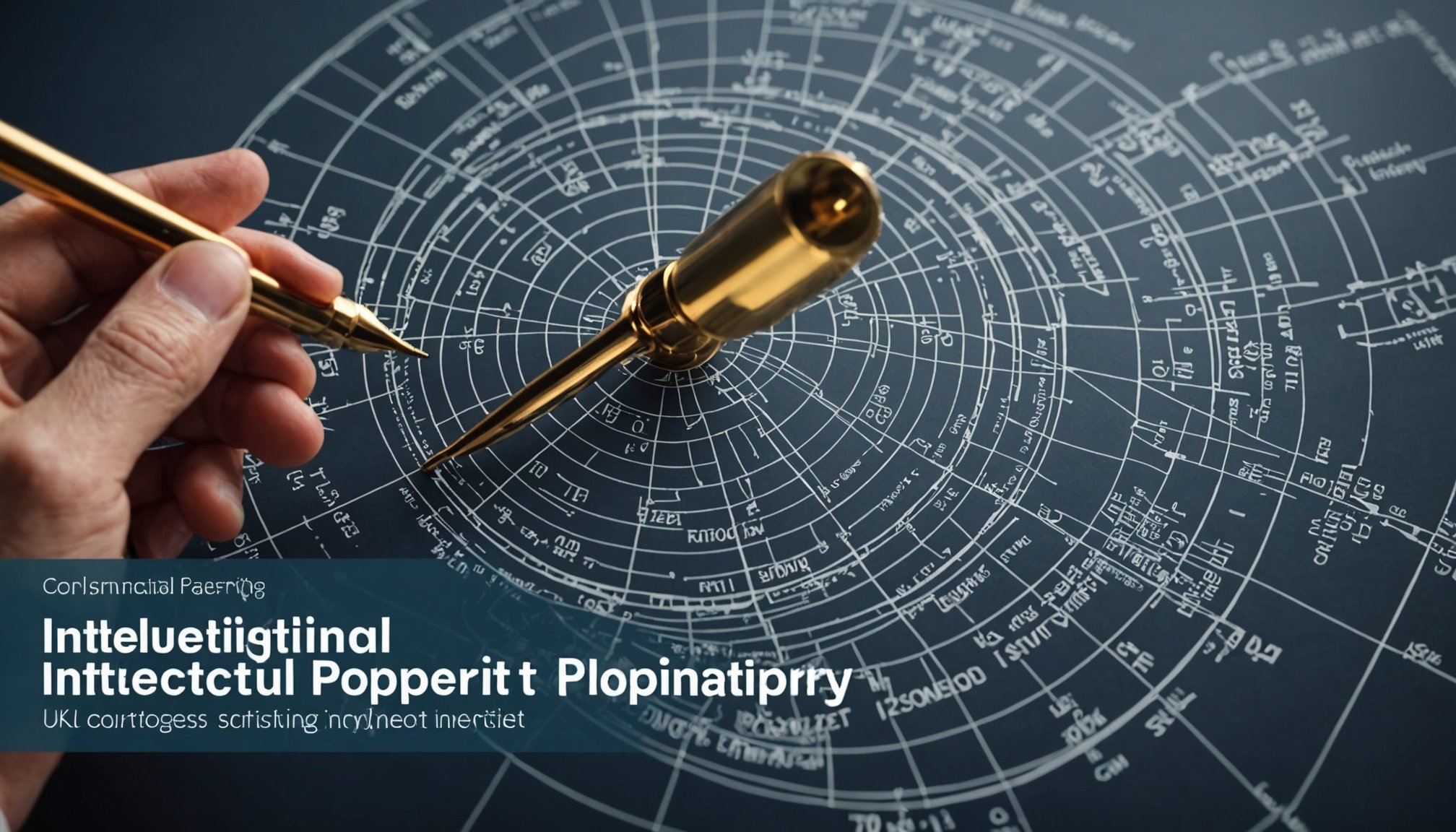Navigating Intellectual Property: A Comprehensive Guide for UK Businesses on Safeguarding New Inventions Legally
Understanding Intellectual Property: The Foundation of Protection
Intellectual property (IP) is a vital asset for any business, especially in the UK where innovation and creativity are highly valued. At its core, intellectual property encompasses the legal rights that result from intellectual creativity, such as inventions, literary and artistic works, designs, and symbols, names, and images used in commerce.
“Intellectual property is something unique that you’ve created with your mind,” as highlighted by Milners Law. This includes patents, trademarks, copyrights, design rights, and trade secrets. Each of these types of IP serves a distinct purpose and offers different forms of protection.
Also to discover : Essential guidance for CQC registration assistance made easy
Types of Intellectual Property
-
Patents: These protect specific inventions that are novel, involve an inventive step, and are industrially applicable. Patents safeguard the functionality of a product or process, not just its appearance. To obtain a patent in the UK, you must file a patent application at the UK Intellectual Property Office (UKIPO), including detailed documents and often drawings that outline the technical aspects of the invention.
-
Trademarks: These protect your brand identity, including logos, names, and slogans. Registering a trademark ensures your brand stands out in the market and reduces the risk of infringement. Trademarks can be registered at the UKIPO and last for 10 years, with the option to renew every 10 years.
This might interest you : What are the rights of employees regarding whistleblowing in the UK?
-
Copyrights: These automatically protect original works like written content, music, and art. In the UK, copyright protection arises on the creation of an original work, and it is not necessary to register it. However, keeping records of the creation process is crucial for enforcement.
-
Design Rights: These safeguard the aesthetic and visual design of your products. There are two types of design rights in the UK: unregistered design rights, which arise automatically, and registered design rights, which can be obtained by filing an application at the UKIPO. Registered design rights protect the visual appearance of a product, including its shape, configuration, and decoration, for up to 25 years with renewals every five years.
-
Trade Secrets: These cover a broad spectrum of information with inherent economic value, such as formulas, practices, processes, and patterns. While trade secrets cannot be registered, they are protected through actions for breach of contract, breach of confidence, or under the Trade Secrets Regulations.
How to Protect Your Intellectual Property
Protecting your intellectual property is a multi-step process that involves several key actions.
Conducting an IP Audit
Before launching your business or introducing new products, it is essential to conduct an IP audit. This assessment helps identify your existing IP assets, understand what needs protection, and highlight potential risks of infringement. An IP audit guides your overall IP strategy in alignment with your business goals.
Registering Your IP
While some rights are automatic, proactive registration is critical for patents, trademarks, and designs. Here are the steps to register your IP in the UK:
-
Patents: File a patent application at the UKIPO, including detailed documents and drawings that set out the technical aspects of your invention. Patents must be renewed annually after the fourth anniversary of filing, up to a maximum of 20 years.
-
Trademarks: File a trademark application at the UKIPO. Ensure thorough searches to avoid conflicts before applying. Trademarks need to be renewed every 10 years.
-
Design Rights: For registered design rights, file an application at the UKIPO. Registered designs can protect the visual appearance of a product and last for up to 25 years with renewals every five years.
Monitoring and Enforcing Your IP Rights
Once registered, actively monitor your IP rights to detect unauthorized use. Here are some practical steps:
-
Regular Checks: Regularly check for unauthorized use of your IP. This can be done through market surveillance, online monitoring, and customer feedback.
-
Legal Action: Be prepared to take prompt legal action against any unauthorized use. This can include actions for breach of contract, breach of confidence, or under specific IP laws.
-
Education and Policies: Ensure your employees understand the importance of IP. Establish clear policies regarding confidentiality and ownership of work created during their employment. This can prevent disputes and help protect your IP more effectively.
Global Intellectual Property Protection
In today’s globalized business environment, protecting your intellectual property across borders is crucial.
Why Global Protection is Crucial
Protecting your IP globally is essential for several reasons:
-
Preventing Infringement: Without international protection, your valuable inventions, trademarks, and creative works are vulnerable to infringement in other countries, leading to significant financial losses and damage to your brand reputation.
-
Enhancing Value: Global protection enhances the value of your intellectual property. Investors and partners are more likely to engage with a business that can demonstrate robust protection of its IP assets across borders, increasing marketability and growth potential.
Steps to Protect Your IP Globally
Securing international IP rights involves several strategic steps:
-
Identify Target Countries: Identify the countries where you wish to protect your intellectual property, typically including markets where you currently operate, plan to expand, or where significant competitors are located. Conduct thorough market research to pinpoint these critical regions.
-
File for IP Protection: File for IP protection in each jurisdiction. This process can differ depending on the type of intellectual property. For instance, patents can be filed through systems like the Patent Cooperation Treaty (PCT) for streamlined international patents. Trademarks might require individual filings in each country, though regional agreements like the Madrid Protocol simplify this process.
-
Continuous Monitoring: Continuously monitor and manage your international IP rights. Keep an eye on renewals, potential infringements, and changes in local IP laws to ensure ongoing protection. Utilize tools like the World Intellectual Property Organization (WIPO) and IP management software to streamline this process.
Tools and Resources for Managing IP Protection
Effectively managing IP protection involves using the right tools and resources.
Utilizing International IP Organizations
- World Intellectual Property Organization (WIPO): WIPO provides various services for international IP protection, including the Patent Cooperation Treaty (PCT) and the Madrid System for trademarks. These systems allow you to file for protection in multiple countries with a single application, simplifying the process.
IP Management Software
- Legal Databases and Monitoring Tools: Use robust IP management software to keep track of applications, renewals, and legal deadlines in different countries. This software helps avoid missed deadlines and ensures all documentation is up-to-date.
Consulting with IP Experts
- International IP Solicitors: Consulting with international IP solicitors and joining global IP networks provide crucial insights and support. These experts can help you navigate different legal systems effectively and ensure your global IP strategy is robust.
Leveraging Your Intellectual Property
Intellectual property is not just a protective measure; it can also be a revenue stream.
Licensing Agreements
- Consider licensing agreements or partnerships to monetize your IP. Licensing allows you to grow your company’s offering while using third parties already established in other areas. This enables you to benefit from existing production and distribution chains while maximizing the value of your intellectual property.
Enhancing Credibility
- Showcasing your IP can enhance your credibility with investors and customers. Demonstrating robust protection of your IP assets across borders increases your company’s marketability and can lead to higher investment opportunities and growth potential.
Practical Insights and Actionable Advice
Here are some practical insights and actionable advice for UK businesses looking to safeguard their new inventions legally:
Keep Detailed Records
- Keep detailed records of the creation process for your original works. This is crucial for enforcing copyright and other IP rights. For example, maintaining logs of the times and dates involved in creating your work can provide evidence of ownership.
Conduct Regular IP Audits
- Regularly conduct IP audits to identify your existing IP assets and understand what needs protection. This helps in aligning your IP strategy with your business goals and highlighting potential risks of infringement.
Educate Your Team
- Ensure your employees understand the importance of IP. Establish clear policies regarding confidentiality and ownership of work created during their employment. This can prevent disputes and help protect your IP more effectively.
Seek Professional Advice
- Navigating the complexities of IP can be daunting. Consulting with Chartered Patent and Trade Mark Attorneys can provide tailored strategies and assistance in the registration process, helping you understand your rights and obligations.
Protecting intellectual property is a critical aspect of any business strategy, especially for UK businesses looking to safeguard their new inventions legally. By understanding the different types of IP, conducting thorough audits, registering your IP, and continuously monitoring and enforcing your rights, you can maintain a competitive edge and ensure the long-term success of your business.
Here is a summary of the key points in a detailed bullet point list:
- Identify and Understand Your IP: Recognize the different types of intellectual property (patents, trademarks, copyrights, design rights, and trade secrets) and understand what each protects.
- Conduct IP Audits: Regularly conduct IP audits to identify your existing IP assets and potential risks of infringement.
- Register Your IP: Proactively register patents, trademarks, and designs at the UKIPO to secure legal protection.
- Monitor and Enforce IP Rights: Actively monitor for unauthorized use and be prepared to take legal action to protect your IP.
- Global Protection: Identify target countries and file for IP protection in each jurisdiction, utilizing tools like WIPO and IP management software.
- Leverage Your IP: Consider licensing agreements and showcase your IP to enhance credibility and monetize your assets.
- Seek Professional Advice: Consult with IP experts to navigate the complexities of IP law and ensure robust protection.
Comparative Table: Types of Intellectual Property Protection in the UK
| Type of IP | What It Protects | Duration of Protection | Registration Process |
|---|---|---|---|
| Patent | Novel, inventive, and industrially applicable inventions | Up to 20 years | File application at UKIPO, including detailed documents and drawings |
| Trademark | Brand identity, including logos, names, and slogans | 10 years, renewable | File application at UKIPO, ensure thorough searches to avoid conflicts |
| Copyright | Original works like written content, music, and art | Varies (typically 70 years after author’s death) | Automatic protection, no registration required |
| Design Rights | Aesthetic and visual design of products | Up to 25 years (registered), 10-15 years (unregistered) | File application at UKIPO for registered design rights |
| Trade Secrets | Formulas, practices, processes, and patterns with inherent economic value | Indefinite, as long as secrecy is maintained | No registration, protected through breach of contract, confidence, and regulations |
By following these guidelines and utilizing the right tools and resources, UK businesses can effectively safeguard their new inventions and creative works, ensuring a strong foundation for innovation and growth.
As Luke Franks of Franks & Co European Patent and Trademark Attorneys notes, “Intellectual Property (IP) is a vital asset for start-ups and small businesses in the UK, offering a competitive edge and fostering innovation”. Protecting your intellectual property is not just about legal compliance; it is about securing the future of your business.











